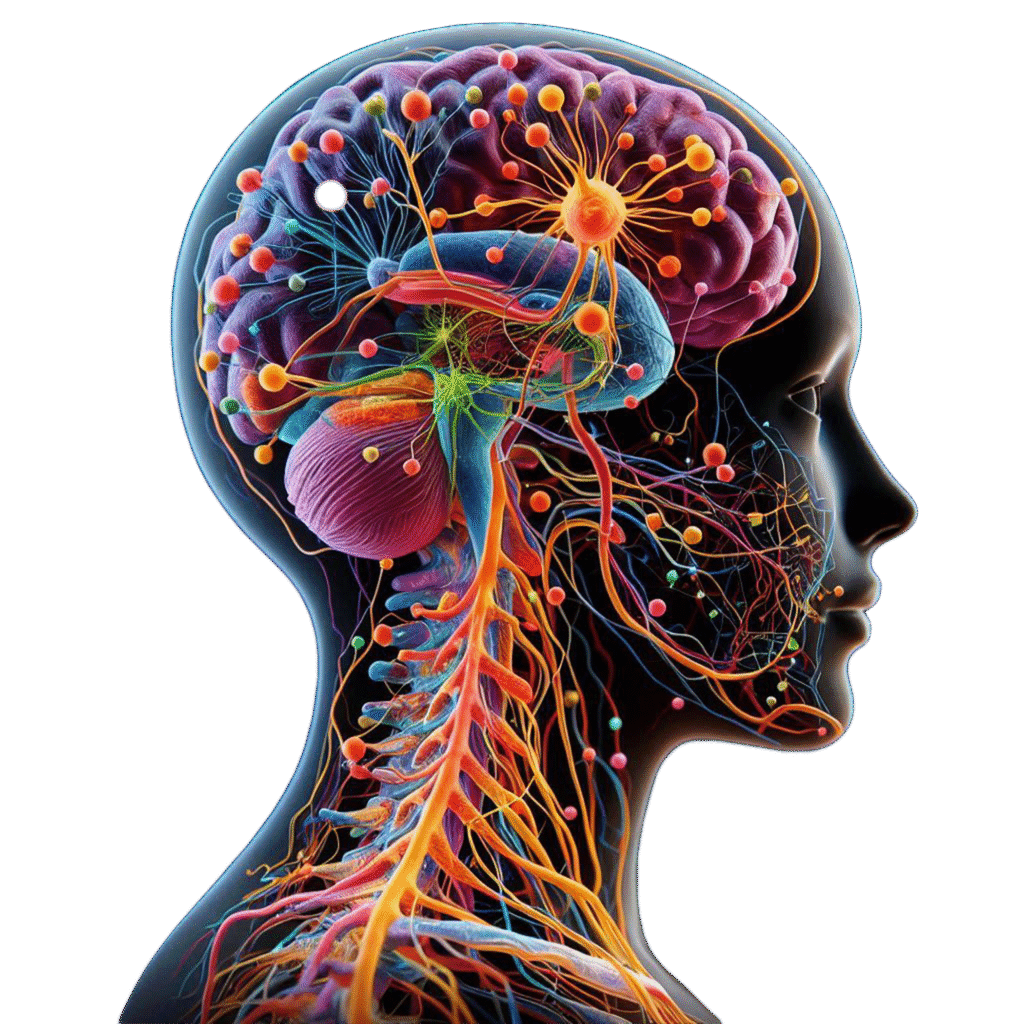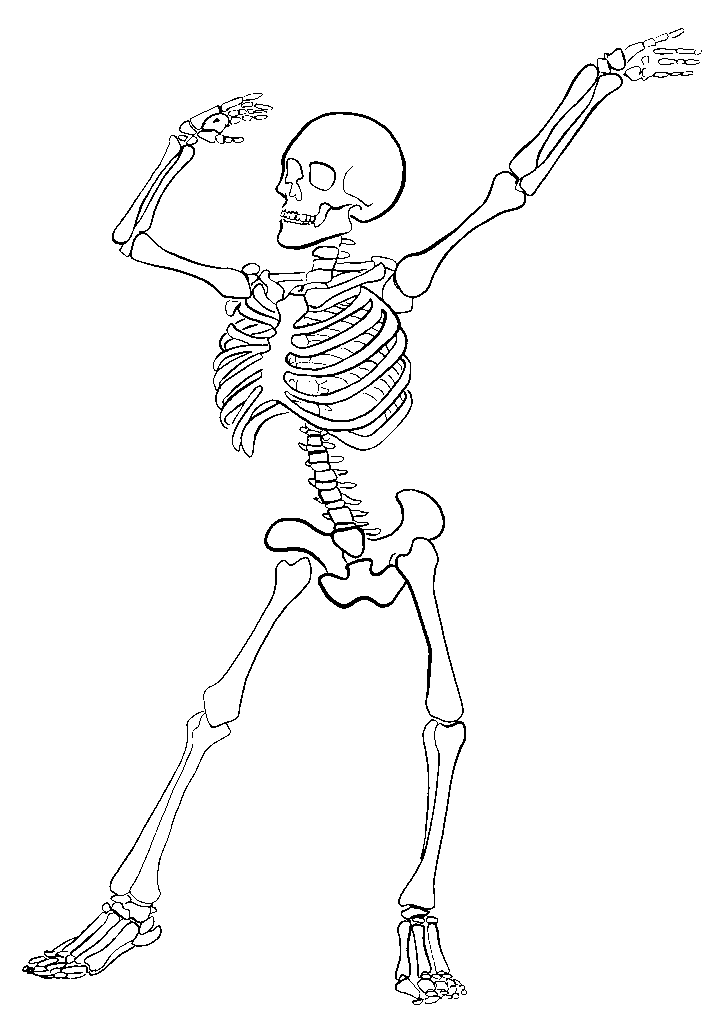Learn how we support your nervous system with whole‑person care

The Main Control Center

5 things you didnt know about the nervous system
1
It’s Your Body’s Electrical Grid and Command Center
Your nervous system controls everything. From your heartbeat to your digestion, movement, immune responses, and even your emotions. It’s all wired through your brain, spinal cord, and nerves. It’s not just about reflexes or pain; it’s the master coordinator of your entire body.
2
It Doesn’t Always Scream for Help, Until It’s Too Late
Unlike a broken bone or a pulled muscle, nerve dysfunction often builds quietly. You might notice fatigue, brain fog, digestive issues, or poor sleep long before you feel “nerve pain.” That’s why taking care of your nervous system proactively is essential. Waiting for symptoms can mean the damage is already well underway.
3
Spinal Health = Nervous System Health
The spinal cord is literally your brain’s communication highway. Misalignments in your spine (known as subluxations) can create tension or interference in nerve flow, leading to dysfunction in the systems those nerves control. Chiropractic care helps ensure that communication stays clear and efficient.

4
Stress Physically Rewires Your Nervous System
Chronic stress doesn’t just make you feel on edge, it changes how your nervous system operates. It can lock your body into a constant “fight or flight” mode, affecting hormones, digestion, immune function, and even posture. Adjustments and nervous system-focused care can help shift you back into a balanced, calm, healing state.
5
It’s One of the Few Systems That Can’t Be Replaced
You can get new teeth, a new hip, even a new heart—but you can’t get a new nervous system. That makes it all the more important to take care of it throughout life. Gentle adjustments, good posture, movement, hydration, nutrition, and rest all help support this irreplaceable, vital system.Autonomic nervous system - understand the two gears your body operates on


Sympathetic nervous system - "fight or flight"
This is your body’s survival mode. It’s activated during stress, urgency, or perceived danger. Your system shifts resources toward immediate action—not healing.
It allows you to run fast, react quickly, fight or flee, and detect danger efficiently. Blood is pumped into your large muscles, pupils dilate, and functions that aren’t essential right now, like digestion, reproduction, and recovery, are put on pause.
Parasympathetic Nervous System - "Rest and Digest"
This is your body’s healing mode. It activates when you’re calm, safe, and recovering. Heart rate slows, digestion improves, and your body focuses on repair, regeneration, and maintaining balance. It allows deep rest, restoration of energy, and enhanced learning. Blood flows to internal organs, and non-essential muscles relax. This is where homeostasis, your body’s natural balanced state, happens.
Increased heart rate & blood pressure
Dilated pupils
Fast, shallow breathing
Tense muscles, clenched jaw/fists
Slowed digestion
High cortisol & adrenaline
Suppressed sex hormones (GnRH, LH, FSH, etc.)
Low thyroid & growth hormone (T3, T4, GH)
Poor sleep; light, interrupted rest
Racing thoughts, hyper-alertness
Weakened memory & focus
Blood shifts to muscles for action

Slower heart rate & lower blood pressure
Deep belly breathing
Better digestion & absorption
Relaxed muscles
Balanced hormone levels
Sex hormones function optimally
Active metabolism & tissue repair
Low cortisol & stress hormones
Deep, restorative sleep (REM & slow-wave)
Clear thinking & memory
Calm mood & emotions
Blood flows to organs for healing
You need both systems, but you’re not meant to live in “fight or flight” all the time. Chronic stress, poor sleep, and spinal misalignments can keep your body stuck in sympathetic overdrive, making it harder to heal, digest, and feel well. Chiropractic adjustments and nervous system-centered care help bring your body back into balance, supporting your parasympathetic system so you can shift into a state of calm, rest, and healing.
How old is your spine?
You might be 25 with the spine of someone twice your age, or 70 with a spine that moves and functions like it’s still in its prime. The truth is, your spine doesn’t age by the calendar alone. It ages based on how you’ve used it, moved it, protected it… or neglected it.

Let’s put it this way: think about your teeth. Most people know that brushing, flossing, and regular dental check-ups help prevent cavities, gum disease, and tooth loss. If you skipped all of that until your 30s, you’d likely be facing fillings, root canals, or implants far sooner than expected. On the other hand, there are people pushing 90 with their original pearly whites intact, all because they took care of them, day in and day out.
The same logic applies to your spine. It’s a structure designed for movement, strength, and flexibility, but only if you maintain it. The spine houses and protects your central nervous system. When it is out of alignment, under long-term stress or affected by wear and tear without support, it can cause more than just aches. Over time, this may lead to chronic pain, mobility issues, nerve interference and in some cases, permanent degeneration or disability. Disc damage, spinal arthritis, and neurological impairment are common outcomes of neglect, especially when spinal problems are ignored for years.
What’s important to understand is that spinal health is preventive, not just reactive. You don’t wait for your teeth to fall out to start brushing, so why wait for pain or degeneration before you start taking care of your spine? Regular chiropractic care, movement, posture awareness, and early intervention are key to keeping your spine youthful and functional, regardless of your age.
So ask yourself: how old is your spine really, and are you doing enough to take care of it before it’s too late?
